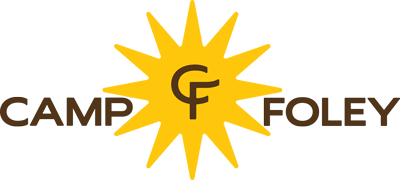Join Us at Camp Foley’s Environmental Education Center
“Children learn best through their everyday experiences with the people they love and trust, and when the learning is fun. And the best place for these experiences is outdoors, in the natural world.” — Center for Families, Communities, Schools and Children’s Learning
We run our Environmental Education Programs with a focus on education but gladly add spiritual components for religiously affliated schools. Take a look below at which program would benefit your school.
I had a couple chaperones also mention how impressed they were with the organization of the camp and how it kept the kids active and engaged. My favorite letter happened to mention that they would much rather be outside all day now instead of playing video games or watching TV. — Joe Mortl, 6th Grade Teacher at Our Lady of Grace School
Children in Nature
We believe that nature is a huge component in developing compassionate, responsible, caring young people. See how Camp Foley’s Enviro Center is is providing children a place to learn and grow in nature.
Learn More
At the Enviro Center
Curriculum
We have different curriculums for Primary (K-4th) and Middle & High School Levels (5th-12th). Each program includes Core Academic Classes, Mini Topics and Evening Adventures.
Learn More
Daily Schedule
Every day begins at 7:00 am and comes to a close around 10:00 pm. Students have four Academic Classes and some free recreational time each day. Three meals a day are eaten inside the Camp Foley Dining Hall, and students have a snack before bed.
Learn More
Reducing Our Carbon Footprint
Composting was introduced into Camp Foley’s Environmental Education Program in 2018. Students learned the difference of what green waste and brown waste is and how it can be composted. Learning to recycle waste is made possible by two handmade compost containers where after meals, the students would get to compost the waste by turning the units. Check out the photos below!
Compost
Gravity Lights (below left) were another new addition to the curriculum. Gravity lights use a weighted pully system to naturally produce electricity. A cool and resourceful innovation used in Africa and other places where electricity is scarce. Similarily to gravity lights, solar lights (below right) were also new. These, like gravity lights, are a substitue to electricity and burning those fossil fuels. Solar lights use energy from the sun, ie solar power, to charge and stay lit. Both options are available for students and cabin groups to try while learning the facts and science behind them.
